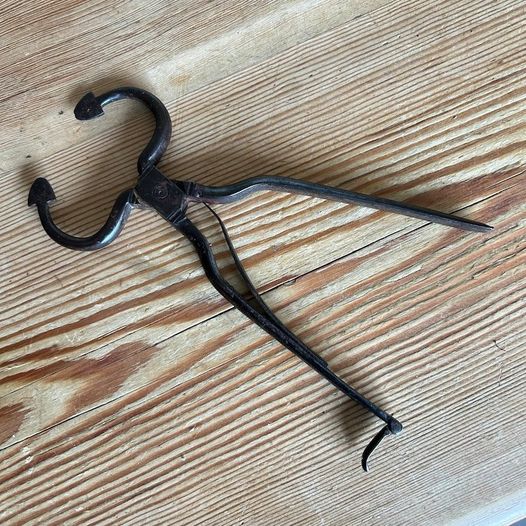History of Iron Sugar Nippers
Iron sugar nippers date back to the 17th and 18th centuries when sugar was an expensive commodity sold in large, hardened cones or loaves. Before granulated sugar became widely available, these sugar loaves were the primary way people bought sugar for personal use. The nippers, sturdy metal tools with scissor-like blades, were essential for breaking off smaller, usable chunks of sugar from the loaf. Typically made of cast iron, they featured long handles to provide leverage and sharp, pointed blades to grip and snap off pieces of the dense sugar. Wealthier households often owned ornate sugar nippers, while simpler versions were common in more modest homes.
Usage of Sugar Nippers
Sugar nippers were used to break up large sugar loaves into manageable pieces, which could then be used in cooking or sweetening beverages like tea or coffee. The user would position the blades of the nippers around the desired section of the loaf, squeezing the handles to “nip” a chunk of sugar free. The size of the sugar nipper’s blades varied, allowing for different sizes of sugar pieces depending on the needs of the household. Given that sugar was both expensive and used sparingly, nippers became a critical kitchen tool.
In larger establishments, such as bakeries or confectioners, nippers were used frequently to prepare sugar for commercial use. Sugar nippers were also common in apothecaries, where sugar was used in medicinal preparations to improve the taste of remedies.
Legacy of Iron Sugar Nippers
As sugar production became more industrialized in the 19th century and granulated sugar grew more affordable, the use of iron sugar nippers began to fade. However, they left behind a significant historical legacy as one of the primary tools symbolizing the era when sugar was a luxury item. Today, vintage iron sugar nippers are highly collectible, prized for their craftsmanship and historical value. They offer a tangible connection to a time when sugar was considered a delicacy, and kitchen tools were often beautifully crafted to last.
These vintage tools now serve as a reminder of the evolution of food preparation and consumption, often appearing in museum displays and private collections dedicated to culinary history. They are admired for their blend of function and form, representing an era when even utilitarian objects were made with an eye toward durability and style.

Leave a Reply